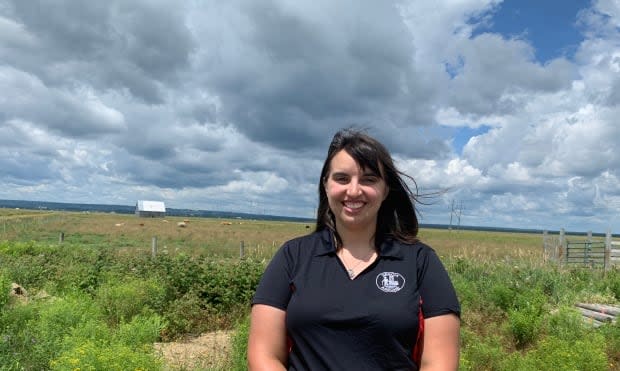Community pasture mixing tradition and science to help beef farmers

Matt Beal has a family, a farm and a full-time job, so in what little spare time he has, he volunteers as the manager of the Tantramar Grasslands Co-operative Limited, looking after an 1800 acre community pasture just outside of Sackville.
The Beal family has been involved for four generations, doing their part to further the beef industry in New Brunswick.
"My great grandfather Reg was one of the founding board members." said Beal.
"Since then my grandfather has been involved, my mum and dad have been involved and now I've been involved. I've been kind of working on the pasture since I was nine or ten years old."
Beal knows the importance of supporting farmers, and he sees science as a way of doing that.
The pasture gives farmers affordable grazing space, freeing up their own land to grow hay and other forage crops.
"Without a place like this, they wouldn't be able to carry the capacity of animals that they have. And with the shortage of animals that we already have in the Maritimes, places like this that have been deemed very important," said Beal.
But rather than just coast along doing things the way they've always been done, Beal is looking for ways to improve the pasture, which in turn is good for the industry.
"If you want to show growing capacity and show growth… we need to kind of adopt some of the methods that science has told us that that are going to help," he said.

One of those methods is rotational grazing.
Zoshia Fraser, assistant general manager of the New Brunswick Soil and Crop Improvement Association, approached Beal with the idea. Using grant money to install fences, the pasture was broken up into paddocks to move away from a continuous grazing system.
"In that system, the cows have the chance to pick and choose which grasses they want to eat. So if you have a grass that's really, really tasty and really good for the cow, they go back and they eat that grass over and over again until that grass dies," said Fraser.
With rotational grazing, the cows are moved from one field to the next over the season.

"Then you get to keep that grass in your pasture for longer, which improves the pasture's yield, but also the cattle yield that you're getting off your pasture."
According to Fraser, allowing the grasses to thrive is also good for the environment.
"As those plants are able to create more roots, we get an increase in soil carbon and that's carbon that used to be in the atmosphere that is now safely stored in the soil. We call that carbon sequestration."
Fraser said the amount of carbon a well managed pasture can hold is still being studied, and the Tantramar Community Pasture is part of that research.
She hopes science can help improve the beef industry's reputation when it comes to climate change, "where cows are driving carbon sequestration instead of carbon emissions. I think that's a really important message that the public needs to know."
There are six community pastures in the province used by about 70 farmers, pasturing 2,500 head of cattle. The land belongs to the Department of Agriculture, Aquaculture and Fisheries and is leased to pasture co-ops, which allow farmers to pasture their cattle for a fee.

